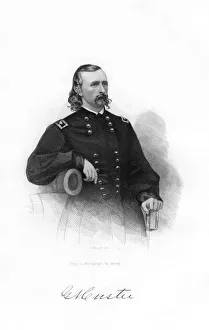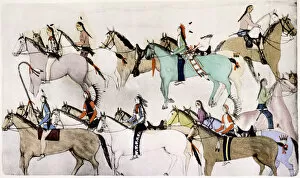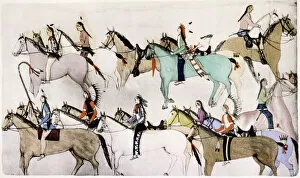George Armstrong Collection
George Armstrong was a prominent figure during the American Civil War and the Battle of Little Big Horn
All Professionally Made to Order for Quick Shipping
George Armstrong was a prominent figure during the American Civil War and the Battle of Little Big Horn. He served as Lieutenant Washington in the Confederate Army before becoming a prisoner of war. Later, he joined the Union Army under Captain Custis (Custer) and played a significant role in various battles. One notable event was his involvement in the Capture of Confederate guns near Culpeper, Virginia in 1863. This showcased his strategic prowess and dedication to his cause. Major General Pleasanton recognized George's talents, leading to him being appointed as part of General Custer's cavalry command. The Battle of Little Big Horn marked a turning point in George Armstrong's life. In this fierce conflict against Crazy Horse and Sioux warriors, he fearlessly led his troops into battle despite overwhelming odds. The artwork by Amos Bad Heart Buffalo vividly captures both the beginning and end of this historic clash. George's bravery is further depicted through Kills Two's artwork showcasing the intense conflict between him and Crazy Horse during Custer's Last Stand. Despite facing painted and befeathered red men, George plunged into battle with unwavering determination. Throughout his military career, George Armstrong proved himself to be an exceptional leader who fought for what he believed in. His legacy lives on through these historical accounts and artistic representations that immortalize his contributions to American history at its most turbulent times - from serving as Lieutenant Washington to becoming an influential figure at Little Big Horn.












